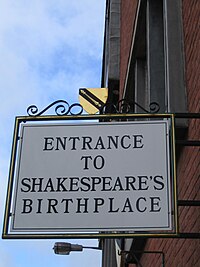Case study: Question 3
From WikiEducator
Jump to: navigation, search
| Course dashboard for #OCL4Ed | ||
|---|---|---|
| Copyright: Your educational right to copy | Introduction | History | Scope | Ownership | Protections | Exceptions | Transfer of rights | Case study | Case study reflection | |
| Case study answers | Question 1 | Question 2 | Question 3 | Question 4 | Question 5 | |
Case study summary
Developing an online course for Shakespeare's Hamlet
- The full text of Hamlet edited by Charles Kean who died in 1868.
- An image of the portrait of Hamlet, by William Morris Hunt (1824 - 1879) housed by the Boston Museum of Fine Arts.
- A digital copy of the Cobbe portrait of William Shakespeare recently discovered in March 2009. (See press release by The Shakespeare Birthplace Trust.)
- A copy of the BBC video providing an overview of the major themes of the play.
- Theresa has compiled a slide show with an audio summary which she will host on Slideshare. Her slide show was based on her own original research work drawing extensively on her article published in the Australian Humanities Review, an open access journal.
Requirements
We suggest you write down your answers so you can check these against the self-assessment activities which follow. In each case, you should identify:
- whether the resources are protected by copyright;
- who owns the copyright; and
- in your opinion, can Theresa include copies of these materials in her course without consent or permission from the copyright holder.
This case study was inspired by ideas in the Copyright 4 Educators (ZA) course. Note that for the purposes of this case study, Theresa is a fictitious character and has not published in the Australian Humanities Review.
Copyright questions relating to the Cobbe portrait of Shakespeare
- Choose the correct option. Afterwards, we suggest that you review the feedback on the incorrect options as these also contain valuable information.
The questions which follow are based on the Cobbe portrait of Shakespeare.
- Is the image protected by copyright?
- Yes
- Correct. The image is an artistic work (photograph) and is protected by copyright.
- No
- Incorrect. While the original is an unattributed work of art, the digital version of this image is protected by copyright as a creative work.
- Yes
- Who owns the copyright of the image?
- Pubic domain
- Incorrect. While the original artwork is unattributed, the painting has been dated to the time of Shakespeare's life and would therefore be in the public domain. However, in this instance we need to establish the copyright of the photograph (not the original painting).
- Alec Cobbe
- Incorrect. The Cobbe Family own the original portrait which is in the public domain. However, Theresa wishes to use a copy of the photograph in her course, so the ownership of the portrait has no bearing on clearing copyright of the digital image.
- Photographer
- Incorrect. It would appear that the photograph of the Cobbe portrait was commissioned. Therefore we would need to establish the conditions of copyright for this commissioned photograph.
- The Shakespeare Birthplace Trust
- Correct. This would be the best place to establish the copyright of the photograph. Most websites using the image with permission cite "The Shakespeare Birthplace Trust and the copyright holders", which suggests that the Trust is the best source for information on ownership of the photograph.
- Pubic domain
- Can Theresa use a copy of the photograph of the Cobbe portrait in her materials:
- Yes
- Incorrect. However, some advocates of the free culture would argue that restricting access to digital reproductions of works in the public domain is an assault on the public domain and will contend that the image should be used in protest of this practice.
- No
- Correct. Legally, Theresa must first clear copyright permissions before including a copy of this photograph in her course materials.
- Yes
